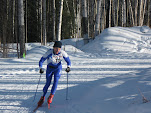Bird Evolution Q&A
Brutal:
Ok now try your very best to grasp what is being said here. Pay close attention.
Where are all those failed birds? Remember something "evolved" into a bird. It didn't just one day take off flying. So where are the failures? What did we have as evolving failed things? What were they called? What did they look like? It wasn't no bird, then the next day, a bird. Ok now once our thing did become a bird, how did we get the hummingbird,eagle,crow,hawk,sparrow etc etc etc? Where were the hawk failures? Where were the hummingbird failures? What a hummingbird over night?
Why don't we have any records of things in the process of evolving? The lion was a, then a,then a,then a..hmmm?
So all animals can trace their roots back to something that walked,crawled out of the ocean once upon a time? Then after millions and millions of years, it would become a goat,horse,camel,gorilla,bear,etc etc etc. Do you really believe that?
What determined what things would evolve into a mouse or an elephant? Where did we get the insects? Didn't they come from those same things that gave us the giraffe?
Do not send me to some site on evolution. I want you to explain how that worked. I'll even jump start ya....
I want you to end up with an black widow spider.
Once upon a time.......
My Response:
Although the fossil record is not complete, there is good evidence for transitional species. Paleontologists have found about six specimens of Archaeoptrix, a transitional species that had both bird and reptilian features.
Birds evolved from thecodont reptiles. And yes there is a decent fossil trail. The ancestral animals, existing more than 200 million years ago, were quadrapeds (they walked on four legs). Later bi-pedal thecodonts evolved. These creatures were closely related to the carrion-feeding Compsognathis, which had a minor role in the movie "Jurassic Park." Fast-running little dinosaurs, about the size of a chicken. Some of these types evolved from a running lifestyle to arboreal habitats. Initially they would leap from tree to tree--much like a squirrel does. Over time and by natural selection, some branched off and developed feathers, which helped in gliding between trees. The fossils suggest that Archaeoptrix was a transitional between a glider and a bird that had actual active flight.
Keep in mind that this didn't just happen in one day, as brutal implies, this was over 100 million years. After Archaeoptrix another transitional species existed, called Sinornis santensis. Fossils of this bird have been found in China, and they are dated to about 140 million years ago. The bone structure of Sinornis was better adapted for true flight. Fossils of loon-like birds have been dated to about 100 million years ago. Most of these birds became extinct at about the time the dinosaurs died out (65 milllion years ago), but a few lineages of toothless birds survived the apparent cataclysm of that era, to evolve into what we know as modern birds. The major lineages of modern birds can be dated to about 60 million years ago. By 55 million years ago what we know as water birds (loons, auks, gulls, ducks, cranes) had evolved. Woodpeckers became the dominant tree-dwelling perching bird by about 40-45 million years ago. Kingfishers and hornbills evolved about 25 million years ago. Then things really took off about 10 or 15 million years ago, when, in conjunction with the explosive co-evolution of flowering plants and insects, modern perching birds evovled to take advantage of insects, nectar, fruit, etc.
About 100,000 species of birds have existed, and over 9,900 species are on earth now. So there are a lot of "failures."
Per the other questions brought forth--once again, new species typically just don't pop up out of the sand or bud off the appendages or cranium of a progenetor (there are some amazing records of single generation speciation with some plants, but with vertebrate species, no). Evolution works through natural selection. No two individuals within a population (or species) are exactly alike--there is always a little variation both in genes (genotype) and form (phenotype) [and genotype is always more variable within a population than phenotype]. Survival and reproductive rates vary within a population. Due to environmental pressure (predation, climate, food niche, available mates, etc.),some die out before they get a chance to reproduce or maybe they don't reproduce as many offspring. The ones that had the favorable genes pass those genes on to the next generation,,,and so on. The population begins to diverge, maybe into subspecies.
Now at some point there may become a barrier to reproduction between the original group and the new ones--habitat, geography, dispersal into new areas....this is where speciation occurs. And over many generations of separation the populations no longer can or do interbreed, you have a new species. There is not set clock on how long this takes.. it can be 10s of millions of years or it can be relatively rapid (as with the example of cichlid fish, where some several thousand new species have evolved from just a few in about 12,000 years).
Hopefully this will answer some of the questions.
Sources:
Gill, F.B. 1994. Ornithology. 2nd edition.
Mayr. 2001. What Evolution Is.


0 Comments:
Post a Comment
Subscribe to Post Comments [Atom]
<< Home